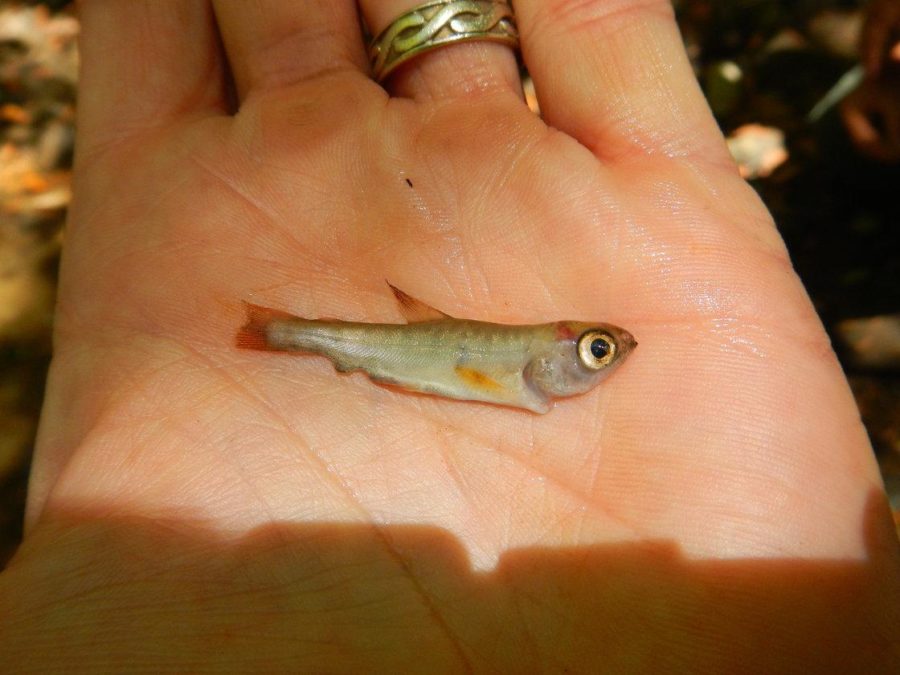Californians may be smoking salmon right out of the state.
With the number of marijuana operations growing, industries may pose a risk to the aquatic creatures that call the Eel River home; SRJC students may see salmon’s population take a dive.
The Eel River has been home to nearly half a million Chinook and Coho salmon. Marijuana growers are now draining water from this river to cultivate their farms— up to an estimated 6 gallons per pot plant a day.
“They use a lot of water during the late spring to the fall periods. This leads to them possibly drying up the lakes in areas,” said Sean White of SRJC’s Agriculture and Natural Resources Department.
Left without a national law for cultivating cannabis, each county votes on restrictions independently: Humboldt voted Oct. 2013 to limit cultivation to a 50-square-foot space; Eureka City Council’s ordinance to 100-square-feet of cultivation and San Francisco dispensary gardens to 99 plants in 100-square-foot premises.
There is an estimated 4,000 Marijuana farms in Northern California, none of which are regulated for water usage and pesticide runoff.
“Ultimately, Marijuana cultivation is an unregulated enterprise, which means there is no way to determine the amounts of fertilizers and pesticides that are applied to outdoor crops situated in a given watershed— the Eel River in this example,” said Robert Landry, the SRJC Sustainable Agriculture Program coordinator.
He continued, “Therefore the improper use of such chemicals would definitely pose a significant problem in terms of water quality issues related to fertilizer and pesticide contamination, as excess amounts of these chemicals eventually end up in the local watersheds.”
Eutrophication occurs when pesticides and fertilizer enter rivers and cause floating carpets of algae to grow, which absorb oxygen out of the water; salmon and other fish suffocate as a result.
According to White, the impact on California’s water is egregious. “Some growers are building small dams which deters migration,” he said.
White explained that dams also pour fertilizer directly into water supplies, compromising the fresh water necessary for salmon to breed. He also said it is common for growers, in an attempt to hide heat signatures, to tunnel exhaust underground, which channels directly into the rivers.
“In Mendocino, there have been more arrests due to spoiling the water quality than growing marijuana,” White said.
Salmon require specific habitat needs. For their offspring to thrive, they must be submersed in completely clean, fresh water. Pesticides leaking into their habitat create an uninhabitable nesting area for the aquatic creatures’ eggs.
Low waters pose a risk as well. California’s current drought, which has hit a record low for rainfall, has left reservoirs unseasonably low. “All the fish are stuck in the main area and are there waiting for rain,” White said. “The Coho salmon are truly endangered if they don’t get rain soon they won’t be able to reproduce.”
Professor Katie Gerber of SRJC’s Environmental Science Department said, “If [salmon] eggs are nesting in small pockets of isolated water, they may not hatch due to the temperature.”
The many challenges that this year’s salmon eggs face are not limited to 2014 alone. Because salmon are on a three-year cycle, Californians may experience a dramatic decrease in the salmon population in 2017 as well, Gerber said.
According to Gerber, if they do not breed successfully this year, a “ripple impact” will occur. She reminded SRJC students, “Lots of organisms rely on salmon besides people.”
The Golden Gate Salmon Association has added salmon to the Species at Risk list.


